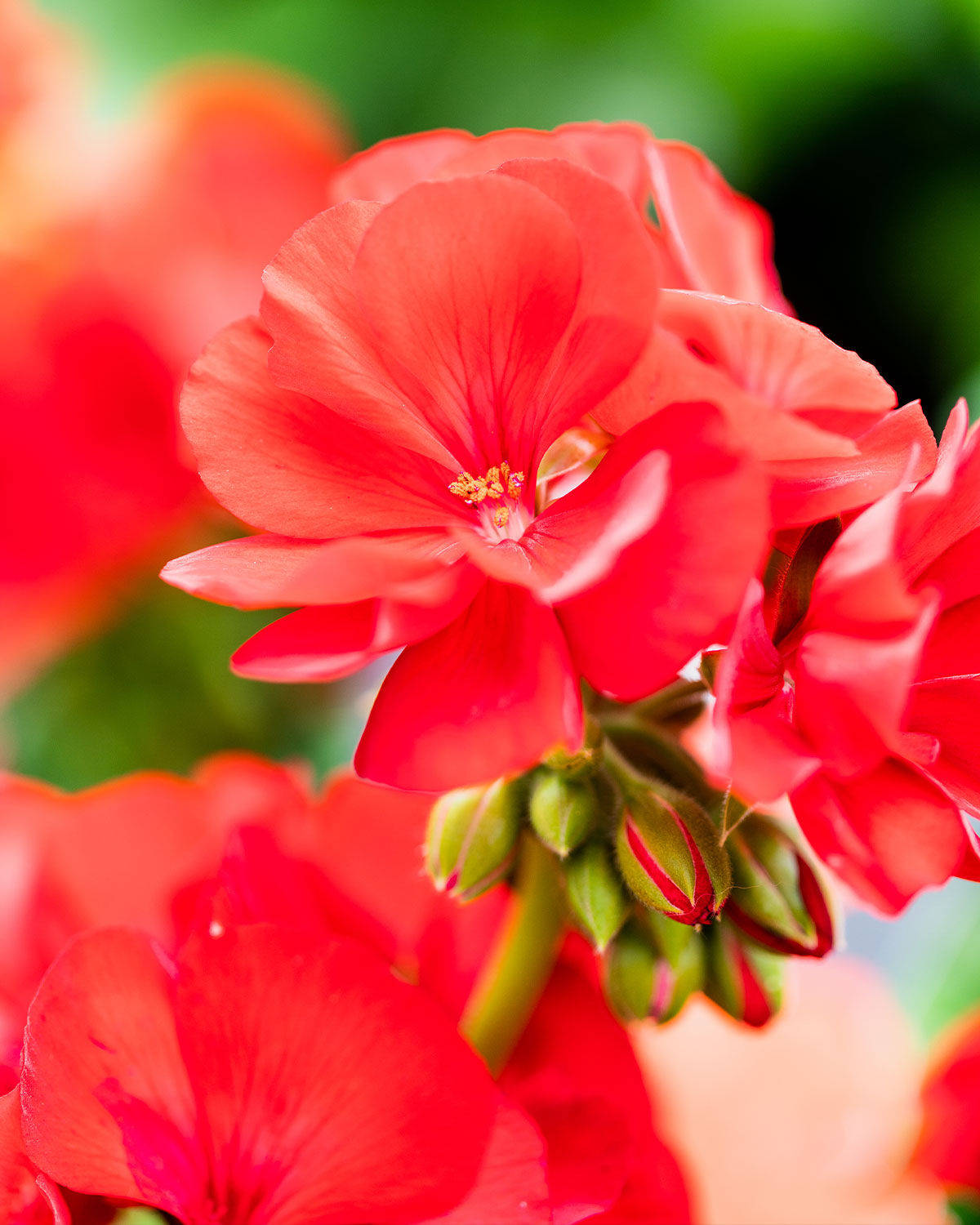Spring is here, and garden centers everywhere are a riot of colour. You’d have to have a heart of stone to be able to resist the brilliance of the plant kingdom!
Geranium ‘Big Red’, released a few years ago now, has proven itself to be a great plant, thanks to its deep red blooms and ability to handle any weather conditions, including our humid, wet times. ‘Big Rose’, ‘Big Pink’, and ‘Big Burgundy’, all share the same lovely bright green foliage, brilliant large flower heads, and extraordinary disease resistance.
This year, the new kid on the block is another outstanding variety, ‘Oh So Orange’. It too is a compact form, perfect for pots, with interesting foliage and masses of iridescent orange blooms. Definitely one for the collection!

What we call geraniums are actually Zonal Pelargoniums, but let’s not worry about that. These perennial, small shrubby plants have a woody base but the young shoots are soft and tender. The roundish leaves with wavy edges are held on long, sturdy stems. There are many varieties that have variegated foliage – the beautiful leaves may have patches of deep purple, pink, cream, orange, yellow, bronze, red, or coppery-red. In fact, the name ‘Zonal’ refers to the band of color that is often present on the leaves.
Geraniums bloom profusely. Their flowers normally have five petals and are held in clusters at the ends of strong, erect stems. There are single, semi-double and double-flowered forms in a huge range of colors including many shades of red, crimson, pink, salmon, orange and white.
Geraniums will produce an almost continuous show of flowers from spring through summer and into autumn. They are pretty easy to grow, but a bit of care will naturally give a better display. They are tolerant of dry conditions, thanks to their fleshy stems and leaves. The ideal position is sunny and well drained. A large pot or hanging basket filled with geraniums looks spectacular.
In prolonged dry periods, the flowering will diminish if you don’t water occasionally, although the plant itself will survive. Feed with a complete fertilizer during the active growing period. Remove spent flowers to keep the plants looking tidy. At the end of autumn, when flowering has come to an end, a light prune all over will produce more flowers in the following season.
In terms of pests and diseases, not much bothers a geranium. Fungal diseases may develop in overly wet or shady conditions and can be controlled by removing and disposing of affected leaves. Spraying with a fungicide may be necessary if the condition becomes widespread. The ‘Big’ series has proven itself to be quite resistant to fungal conditions, and this is one of the reasons for its success in our climate.
Sometimes a small caterpillar we call budworm may drill holes into the buds and chew on the petals before the flower opens so that the flower is distorted or even non-existent when the bud opens. You can control this with Dipel or Eco-Neem if the damage is extensive.